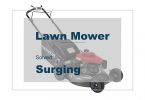A luscious green lawn not only looks good, but it also feels great to play and walk on.
Unfortunately, winter can cause several problems to your lawn, such as altering its pH and creating conditions that favor weed growth and disease. Spring is a crucial time for you to pay special attention to the lawn to ensure it stays healthy all summer long.
Below are some top tips to help you tackle spring lawn care effectively.
Clean Up the Lawn
Winter can leave your lawn in a real mess. Snow piles may smother lawn grasses and encourage mold growth.
As the cold weather surrenders to warmer temperatures, make sure you promote faster melting of the snow piles by spreading them out using a shovel.
You’ll then need to wait for the soil to dry out before carrying out more spring cleaning on your yard. Working on your yard while it’ still soggy will disturb or compact the soil and cause damage to tender grass shoots.
When the ground dries, get out your rake and remove the dead leaves, twigs, and other debris that have accumulated on the lawn during the winter. This will help encourage new growth and keep away annoying pests.
Caution: If you live in a snow regions, wait until the ground is dry before you start to clean your lawn.
Tune Up Lawn Equipment
Prepare your mower for the summer mowing season by performing routine maintenance.
Clean its top and undercarriage, change the oil, spark plug, and air filter, and sharpen the blades. Air up the tires on your riding mower.
Also, perform a tune-up on your string trimmer and other lawn implements to make spring lawn care a breeze.
Prevent Weeds
Weeds are one of the leading enemies of a lush lawn. They stick out like a sore thumb.
In the spring, you’ll have to choose between lawn seeding and controlling weeds. If you decide to focus on the latter, then prevent weed growth by applying pre-emergent herbicides. These products are formulated to inhibit the germination of weed seeds. All types of lawn grasses will benefit from this weed controller.
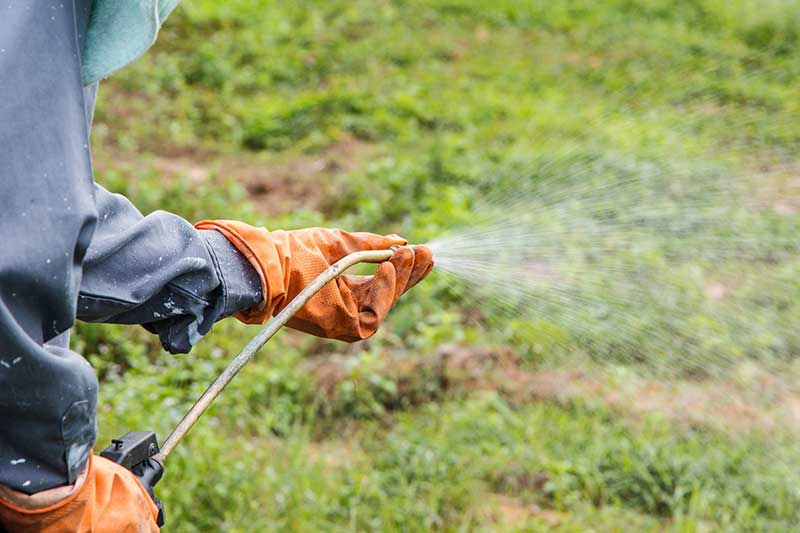
So when should you apply a pre-emergent herbicide? One excellent timing hint is to use it just when forsythia bushes are in full bloom. That will stop crabgrass, dandelion, and other stubborn weeds before they sprout.
But remember this: pre-emergent herbicides tend to be effective for around three months. For that reason, consider reapplying the herbicide in the summer.
Seed and Plant
A pre-emergent herbicide will work against weed seeds as well as grass seeds, so you may want to shift lawn seeding to the fall. However, if you intend to plant new grass this spring, then avoid applying the herbicide around the area that you would like to plant.
Your lawn’s grass type should determine your planting activities. The basic types of grasses are warm-season and cool-season grasses.
Warm-season grasses thrive in the summer months. They include:
- Centipede
- Bermuda
- St. Augustine
- Zoysia
It’s best to plant these grasses in late spring when there’s no risk of frost.
Cool-season grasses struggle during the summer months. They have a big growth spurt in the fall. In the spring, they experience a moderate spurt. These grasses include:
- Rye
- Bluegrass
- Fescue
It’s best to plant these grasses in the fall. In preparation, patch the bare spots in the spring and water your lawn sufficiently in the summer.
Make sure: After seeding, soil should be kept moist. This will support germination process.
Fertilize
Feeding your lawn with fertilizer will help it become thick and vibrant. However, that will only happen if you use the fertilizer correctly.
If your lawn has cool-season grasses, avoid fertilizing it in the spring. If the grasses are in bad shape, feed them lightly using a balanced slow-release fertilizer.
Fertilizing too much in the spring can cause weed problems and disease, or even kill the grass in the summer if you live in a drought-prone area. Schedule heavier feeding for late fall. As for warm-season grasses, fertilize them in late spring once they’ve greened up and are actively growing.
Test Your Soil
Testing your soil in the spring will allow you to find out if your yard has the right pH balance. The winter rains can wash nutrients away and leave the ground more acidic.
If the soil has a pH of below 6, you can remedy the situation by applying lime to it.
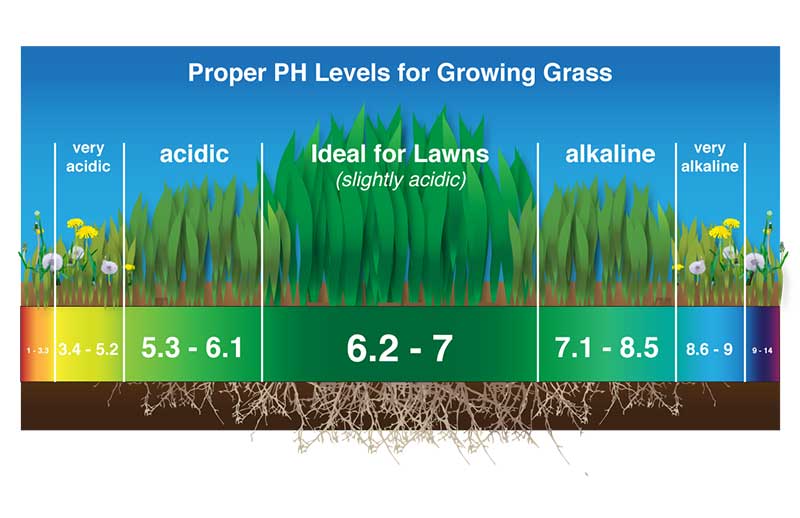
Recommended Lawn Soil Ph Level: 6.2 to 7
Be sure to follow the instructions on the test kit and the amendments you buy. If you’re planning to plant new grass, liming your soil in the early spring is an excellent idea.
A word of caution: avoid applying lime for up to three weeks after fertilizing your yard. The ingredients can interact and lose their effectiveness.
Dethatch
Thatch is common in dense, spreading grasses such as Zoysia and Bermuda.
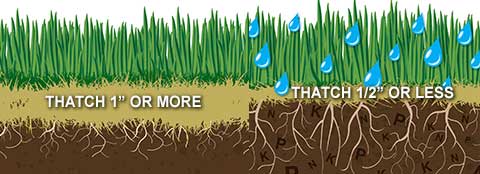
If it becomes too thick, it can prevent nutrients and water from reaching your soil.
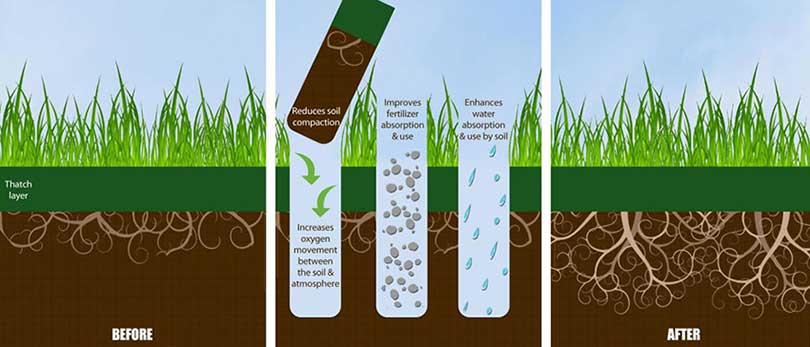
Core aeration can help you avert thatching. However, don’t perform core aeration if you’ve applied a pre-emergent herbicide. Doing so would decrease the herbicide’s effectiveness.
If the layer of thatch is an inch or greater in thickness, you may have to break it up with a specialized tool like a power rake or mechanized dethatcher.
Control Insects
Hibernating grubs tend to move toward the surface in late spring. Applying products that deal with them and other insects like mole crickets then or in the summer will be of great benefit.
Spring is an excellent time to control fire ants as well.
Water the Lawn
When grass begins growing, ensure you give your lawn at least an inch of water every week. Lack of enough water will turn your grass brown or yellow.
Mow the Lawn
There’s more to cutting grass than just turning on your lawn mower and pushing or driving it across the yard.
When performing spring lawn care, it’s crucial to consider mowing frequency and height. You’ll be better off trimming the grass little and often than opting for low and infrequent cuts.
RELATED – Learn more about mulching your lawn clippings.
Cutting grass short takes away nutrients, weakens them, and leaves the soil exposed to sunlight, making it easier for weeds to take over. Taller grass competes better with weeds and shades the soil to help it retain water.
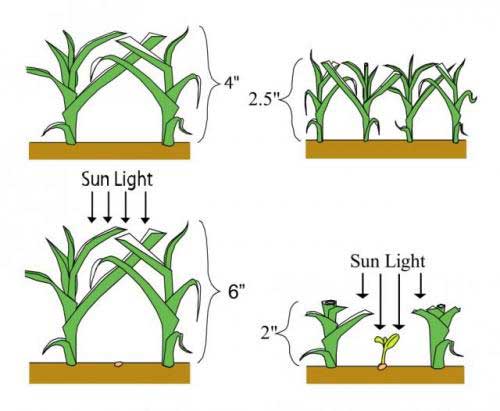
As a rule of thumb, mow the grass often enough such that you never remove more than the top one-third at a time.
These spring lawn care guidelines make a significant difference to the health of your lawn. Following them will go a long way toward ensuring you have a lush lawn for the rest of the year.



